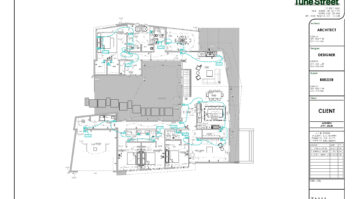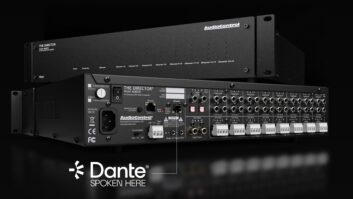Pick up any one of the top 10 women’s magazines, and you are bound to find an article on “keeping your relationship alive.” While much of what Cosmo has to say doesn’t apply to the residential technology industry, one point applies to women’s magazine readers and custom installers alike: If attention isn’t paid to relationships, they will die.
Michael D. Johnson, professor of business administration and marketing at the University of Michigan Business School in Ann Arbor, and co-author (with Anders Gustafsson) of Improving Customer Satisfaction, Loyalty & Profit (Jossey-Bass), describes the purchasing process from the customer’s perspective: “The customer goes through a whole evolution where they consider buying, they buy, implement, reevaluate, and re-purchase. They are constantly going through this purchase-consumption-evaluation-repurchase process,” he outlined. “Many times, you get so sales-oriented that all you are doing is getting in contact with the customer when they are ready to buy again, and not when they are feeling the points of pain as they live with the product through the consumption cycle.”
Johnson believes that our transaction-based culture contributes to this phenomenon. “There is an emphasis on transactions as opposed to relationships,” he said. “When we think of transactions, we think in terms of sales. You sell to one customer, that transaction is complete, and then you move on and worry about another customer. We don’t worry about how it is going. The whole concept of customer satisfaction is understanding what is going on and the issues that customers are having when they are not in the process of buying the product.”
Jim Gilmore, co-founder of business consultancy Strategic Partners LLP (www.customization.com), and co-author of The Experience Economy (Harvard Business School Press), notes that customers are continually asked to make sacrifices–something that businesses should always be conscious of. “The problem with many relationships between a business and its customers is that regardless of how many times supplier and buyer interact, customer sacrifice never comes down,” he pointed out. “Companies need to realize that the purpose of every interaction is not just to perform the immediate task at hand, but in doing so learn about the unique needs of individual customers so that at some point some dimension of customer sacrifice can be reduced or eliminated.”
Gilmore says that this endeavor requires businesses to customize their services to suit each client. He and partner/co-author Joe Pine believe that the best way to solidify customer relations is to give clients a memorable experience. A number of custom installation firms are attempting to do just that, with the help of elaborate showrooms that demonstrate high-end home entertainment and control solutions, enabling clients to view the technology up close and personal.
Audio Etc…Design Center in Dayton, Ohio (www.audioetc.tv), is among these companies. After 18 years in business, the custom installation firm terminated its lease of a retail space and purchased a facility in a Dayton industrial park. Last December, Audio Etc… announced the grand opening of its new showroom, which houses two great rooms with cathedral-style ceilings, a kitchen, bedroom, an outside courtyard, a billiards room and a home office. While the showroom hasn’t been in operation long enough to show an increase in sales, owner Kirby Gaboury notes that sales have become a little easier.
“I have noticed in increase in closing,” he said. “In the old store there were a lot of lookers. Now we are more tucked away, and everyone coming in is more interested in looking at the products, and we are closing a higher percentage of that business.”
In addition to addressing homeowners, Gaboury will use this space to form relationships with architects, designers and builders.
Progressive Audio (www.progressiveaudio.com), a custom installation and systems contracting concern in Columbus, Ohio, recently put the finishing touches on its own showroom, “the Progressive Home.” Aaron Carmack, Progressive Audio’s director of marketing, explained that this new facility will act as an education tool for customers as well as builders. Completed in the fall of 2002, the company hasn’t had enough time to note a significant increase in sales, but the Progressive Home has already demonstrated its value in a number of ways.
“It has changed the selling process for us in a positive way,” Carmack said. “It makes some things that were very difficult to sell much easier.” Carmack also noted an increased acceptance of technology from those more concerned with the aesthetic make-up of a home–stereotypically its principal female resident. “We have really focused on taking these toys and working them into the environment as a home-friendly environment, and pointing out that it looks nice in addition to sounding good, and doesn’t stand out from the rest of the dcor. We are seeing an acceptance from those who are concerned with the decorating aspects of the home.”
Like Carmack and Gaboury, Greg Margolis, president of HomeTronics Inc. (www.hometronics.com) a Dallas-based custom installation firm, is using his newly built showroom to solidify his relationships with the architecture, design and construction community. The 1,500 square-foot space features a high-end home theater and ancillary areas. Having enlisted the Russ Berger Design Group to conduct an acoustical analysis of the space, Margolis is also able to sell the importance of acoustical design using this facility.
“We wanted this facility to demonstrate what high-end home theater truly is,” Margolis said. “You can tell people about it, but for rooms that are half a million dollars or more, there is only so much you can do to explain the experience. Living the experience is the best way to show it off.”
Margolis has noted an increase in revenue as a result. “The number of sales remain the same, but the dollar level has increased, because you can show people that if they spend the extra money on particular facets of the room, how that is justified.”
But providing an impressive space is only half the battle, Pine notes. “So many people, when they think about staging a great experience, mistake the environment for the experience. The experience actually happens between the customer, the environment, and the other people in it,” he said. “What happens inside of that environment creates the experience.”
While Gaboury acknowledges that he could still write a good deal of business without the existence of this new facility, the showroom has definitely helped him take Audio Etc… to the next level. “It adds credibility and strength,” he said. “There is something about having a nice facility to show that you are committed to this market and that you are not going to go away.”
Carolyn Heinze ([email protected]) works from her office in Vancouver, Canada.







